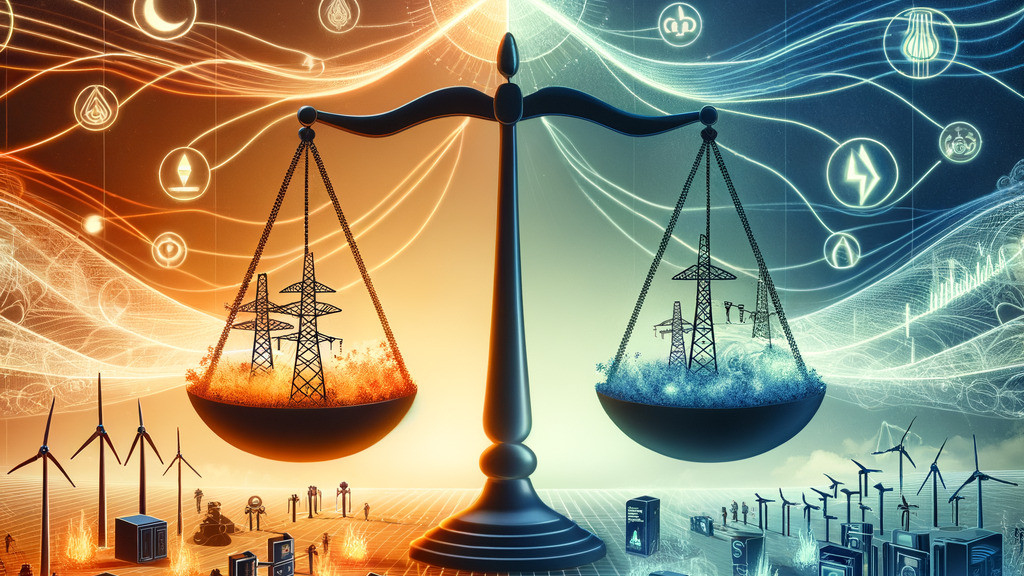Demand Side Management (DSM) is a strategy employed by utility companies to manage the electricity demand of their customers, rather than simply increasing the supply to meet demand. DSM aims to reduce energy consumption during peak periods, shift energy usage to off-peak times, and improve overall system efficiency. This approach not only helps utilities maintain a reliable grid but also benefits customers by reducing energy costs and promoting energy conservation. In an era of increasing energy prices, environmental concerns, and ageing infrastructure, DSM has become an essential tool for modern utilities.
Understanding Demand Side Management
DSM encompasses a wide range of programs and initiatives, which can be categorized into four primary types:
- Energy Efficiency
Encouraging customers to use less energy by promoting the use of energy-efficient appliances, lighting, and building designs. - Demand Response
Providing incentives for customers to reduce their energy consumption during peak demand periods, usually in response to a signal from the utility. - Load Management
Implementing technologies and practices that enable utilities to control specific loads directly, such as heat pumps, car chargers or air conditioners, to balance the supply and demand of electricity. - Distributed Energy Resources
Integrating small-scale, customer-owned generation sources, such as solar panels and battery storage systems, into the grid to help manage overall demand.
Types of DSM Programs
There are a variety of DSM programs that utilities can implement, including:
- Energy efficiency programs
These programs provide financial incentives to customers who purchase and install energy-efficient appliances and equipment. - Rebates
Utilities may offer rebates to customers who purchase energy-efficient products or participate in energy efficiency programs. - Time-of-use pricing
This pricing structure charges customers different rates for electricity depending on the time of day. This can encourage customers to shift their energy usage to off-peak hours, when electricity is less expensive. - Demand response programs
These programs allow utilities to reduce demand for electricity during peak periods by offering customers financial incentives to reduce their energy consumption.

(symbol image, credit CLOU)
Bidirectional Metering (Net Metering) and DSM
Bidirectional metering, also known as net metering, is a billing mechanism that allows customers with solar photovoltaic (PV) systems to sell the excess electricity they generate back to the grid. This can be a valuable tool for DSM, as it can encourage customers to install solar PV systems and reduce their reliance on grid electricity.
Utilities can support bidirectional metering by:
- Offering net metering programs to customers
- Installing smart meters that are capable of measuring electricity flow in both directions
- Developing time-of-use pricing programs that allow customers to sell excess solar electricity back to the grid at a higher rate during peak demand periods
Utilities that are looking to implement DSM programs should consider investing in smart meters and advanced metering infrastructure. These technologies can help utilities to achieve their DSM goals and provide a number of benefits to their customers and the environment.
Benefits of Demand Side Management for Utilities
- Reduced Peak Demand
By reducing peak demand, utilities can avoid the need to build new power plants or upgrade existing infrastructure. This can save utilities money and help to keep energy costs low for customers. - Improved Grid Reliability
DSM can help to improve grid reliability by reducing the strain on the system during peak demand periods. This can help to prevent blackouts and brownouts. - Deferred Infrastructure Investments
DSM programs can help utilities delay or avoid costly infrastructure upgrades, such as building new power plants or transmission lines, by reducing the need for additional capacity. - Reduced Energy Costs
Utilities can lower their operating costs by reducing peak demand, as the cost of generating electricity during these periods is typically higher due to the use of more expensive, less efficient power plants. - Environmental Benefits
DSM programs can contribute to a reduction in greenhouse gas emissions by promoting energy efficiency and reducing the need for fossil fuel-based power generation. - Enhanced Customer Satisfaction
By offering customers incentives to participate in DSM programs, utilities can improve customer satisfaction and foster long-term loyalty.
DSM requires End Customer Participation
DSM programs require significant cooperation from end users in order to achieve the desired results. Here are a few key points:
- DSM programs aim to influence end customers' usage behavior. This requires their active participation, e.g. through the use of energy management systems or the flexibility of energy consumption.
- Many measures such as the installation of efficient devices or building renovations must be voluntarily carried out and financed by the customers. Without their willingness, the savings potential remains untapped.
- Demand response programs are based on customers reducing their consumption as needed. Their prompt and reliable response is critical to success.
- Energy consultations and audits flow into individual recommendations for households. Only if customers implement these can savings targets be achieved.
- Reliable evaluations require real consumption data before and after program participation to be collected. This requires the consent and cooperation of participants.
- DSM lives on continuous improvement. Programs therefore need to be continuously adapted to new framework conditions and technologies.
- Acceptance in the population is important for sustainable success. Only if customers support the goals of DSM can they be established in the long term.
Overall, end users are core partners that DSM utilities rely on to test innovative solutions, track performance and achieve the full scope of load shaping potential over the long run. Gaining customers' commitment and trust is thus essential for utilities implementing successful DSM portfolios.
Takeaway
Demand Side Management offers significant benefits for utilities, including improved grid stability, reduced infrastructure costs, and enhanced customer satisfaction. By understanding the various types of DSM programs and implementing them effectively, utilities can better manage energy demand, promote energy efficiency, and contribute to a more sustainable and resilient energy future. As the energy landscape continues to evolve, DSM will play an increasingly important role in helping utilities navigate the challenges and opportunities ahead.
If you have any inquiries or need further information about our CLOU metering solutions for demand side management, please do not hesitate to reach out to us. We are here to assist you and welcome your valuable thoughts and comments.
Thank you for reading, and until next time, keep shining bright like a solar panel on a sunny day!





Hello!
I am writing a master dissertation on this subject, and I was wondering if you have any suggestions for literature regarding the relationship between demand side management and residential energy efficiency?
Thank you for your question. At CLOU, we truly value the opportunity to engage in discussions with utility leaders from around the world. These conversations have provided us with valuable insights into the diverse experiences and approaches when it comes to introducing demand side management to end users. It's fascinating to discover the various factors that come into play, including pricing strategies during peak times, which have indeed shown an impact on user behavior. However, it's important to acknowledge that there are other influential factors at play as well, such as awareness campaigns, incentives, and the availability of energy-efficient technologies. Actually, it becomes evident that there is no one-size-fits-all solution. Each utility tackles this challenge in their own unique way, considering the specific needs and circumstances of their region. It's an exciting and complex field where a holistic approach is key, taking into account multiple factors to encourage end users to embrace energy-efficient practices. While I don't have specific literature references to provide at the moment, I encourage you to explore academic databases, research institutes, and industry publications to gain comprehensive insights on the relationship between demand side management and residential energy efficiency.